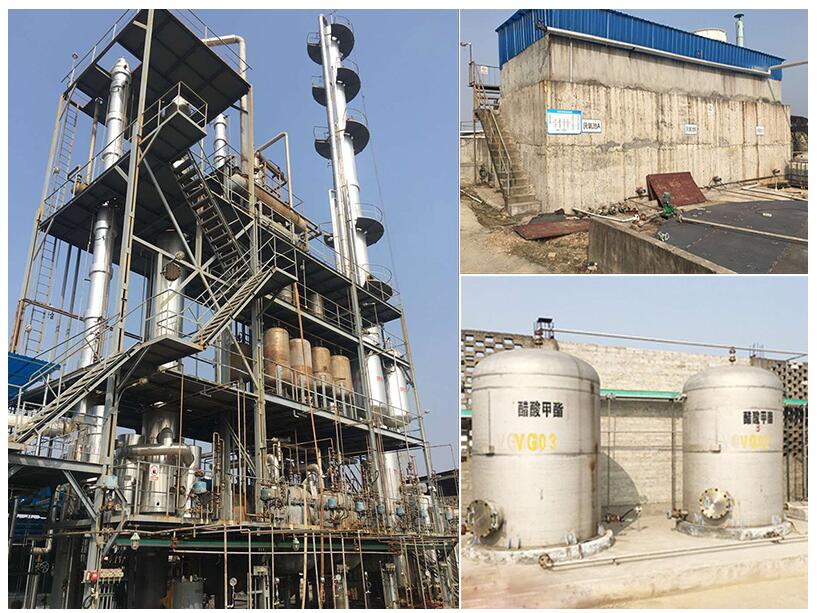Methyl acetate is a fast evaporating, mild-smelling reactive solvent used in a wide range of coatings and ink resins. Because of its fast evaporation rate, methyl acetate can be used as a fast evaporation component in high and low solvent systems and other applications that require fast solvent release and fast-drying contact time. Methyl acetate is an active solvent for the following resins: cellulose acetate butyrate, nitrocellulose, vinyl copolymers, acrylic resins, epoxy resins, polyamides, phenolic resins, alkyd resins, and polyesters. Compared to other fast evaporation solvents, the solution viscosity of methyl acetate is slightly higher than acetone or MEK, but lower than ethyl acetate.
Background
Methyl ethyl ketone (MEK) is currently used in small quantities in manufacturing processes to remove small amounts of production dirt and oil from silicone elastomer parts. Part manufacturers are working to reduce volatile organic carbon (VOC) emissions. Replacing MEK with methyl acetate will eliminate one source of regulated VOCs.
Factors Affecting Solvent Substitution Choices
● The ability of the solvent to dissolve or wash away dirt (grime, oil)
● Chemical compatibility of the solvent with the parts that must be cleaned
● The safety of the solvent used and the risk of exposure to workers
Suitability of methyl acetate V.S. MEK for Washing Dirt &Oil
The best way to determine the suitability of a solvent for washing is to perform some simple laboratory washing experiments.
The overall behavior of a solvent is characterized by three terms: a non-polar (dispersion) term, a polar term, and a hydrogen bonding term. Solvents with similar values for the three descriptive terms are likely to behave similarly in practice. Oily soils or contaminants may be non-polar.
Roughly speaking, isopropyl alcohol has a stronger hydrogen bonding component and does not dissolve oil because it has an increased tendency to form hydrogen bonds with itself. In other words, the interaction of isopropanol with other isopropanol molecules competes with its interaction with oily soil materials.

GET HELP IN METHYL ACETATE PLANT DESIGN
Solvent Use Safety and Worker Exposure Risks
Methyl acetate is more volatile than MEK, so it may lead to worker exposure or to hazardous vapor concentrations more quickly than MEK. Like MEK, methyl acetate is flammable, but it ignites more readily than MEK (lower flash point).
The permissible exposure limits (PELs) for MEK and methyl acetate are similar, and both solvents are respiratory irritants that may cause central nervous system depression and are otherwise unhealthy if workers are overexposed through skin contact or inhalation of vapors. All solvent safety data should be reviewed prior to use in any facility.
Key Findings
▷ Methyl acetate may interact with silicone elastomers in a similar manner to MEK, but compatibility testing is strongly recommended to avoid any unpleasant surprises.
▷ Methyl acetate may be a good substitute for methyl ethyl ketone (MEK) for oil removal from silicone elastomer parts.
▷ Methyl acetate has a lower boiling and flash point and is more volatile than MEK, so additional precautions may be required to protect workers and avoid inhalation exposure. MEK and methyl acetate have similar airborne permissible exposure limits (PELs), but it may be easier to meet the limits with methyl acetate.
▷ Methyl acetate has a lower atmospheric reactivity (no VOCs), so switching to MEK will reduce ground-level ozone generation associated with parts cleaning emissions.
▷Methyl acetate itself is not considered a hazardous waste, so switching from MEK will reduce the amount of hazardous waste generated during parts cleaning.
Conclusion
Methyl acetate may be a good substitute for MEK in parts cleaning. while solvent behavior theories are not perfect, they are a reasonable guide to solvency in the absence of specific experimental data. Again, the same solvent theory suggests that methyl acetate will interact with the plastic material of the part in nearly the same manner as MEK.
Like MEK, Methyl acetate is flammable and may be harmful to workers, especially when exposed to vapors. Methyl acetate is more volatile than MEK, so it builds up more quickly in the air environment. Given the high volatility, methyl acetate will also dry out more quickly, which may require a change in cleaning methods.
Methyl acetate is not considered a hazardous waste, so eliminating the use of MEK may reduce the amount of hazardous waste generated by cleaning operations. In addition, given the low atmospheric reactivity of methyl acetate (no VOCs), conversion from MEK will also reduce ground-level ozone generation associated with parts cleaning emissions.
SL Tec is a leading Methyl Acetate Plant and Methyl Acetate production process design supplier with rich experience and profession. By using cleaner and high efficient chemical process technologies, we would like to help you to increase the production efficiency of Methyl Acetate and build a cleaner future together with you. Welcome to contact us for further consultation.














